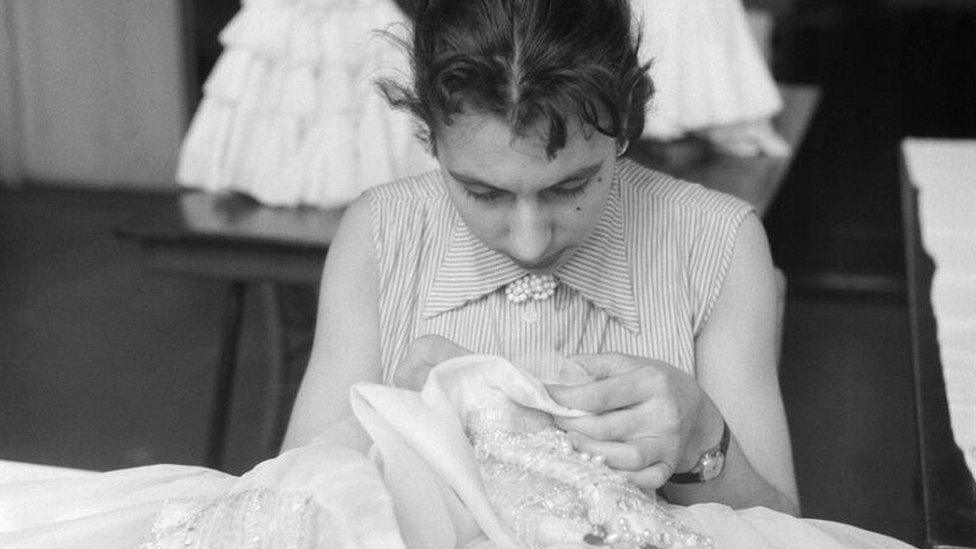Fashion designer Biba opens retrospective exhibition in Bermondsey
- Published
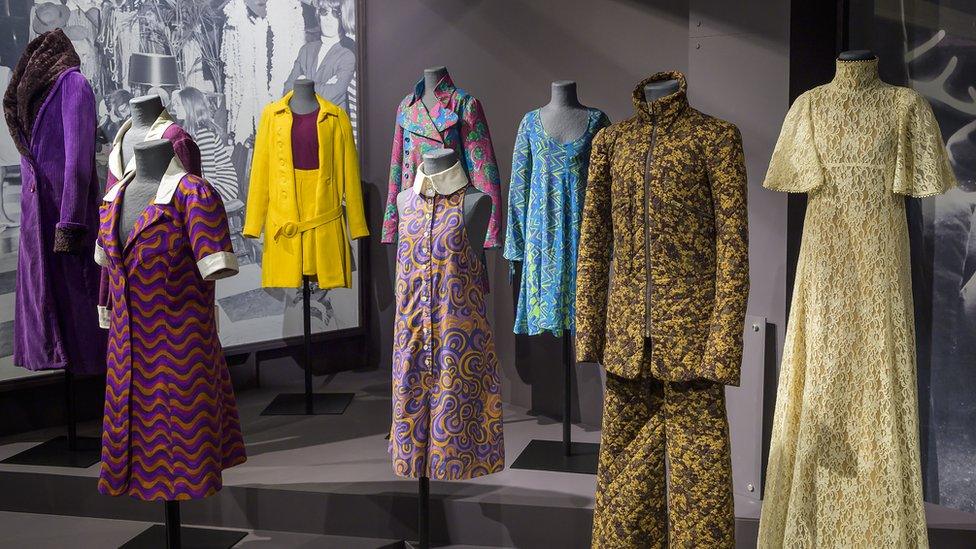
Biba targeted a younger audience with cheaper garments with bolder prints and cuts
An exhibition looking at London fashion brand Biba is on show at the Fashion and Textile Museum in south London.
More than 60 years after the brand's inception in 1963, The Biba Story explores the brand's evolution and popularity during the 1960s and 1970s.
Pieces on display include its first bestseller, a pink gingham dress similar to one worn by Brigitte Bardot.
Visitors can also see Biba-branded baked beans and cosmetics from the brand's Kensington department store.
Biba began as a mail-order brand and was created by Barbara Hulanicki and her husband, Stephen Fitz-Simon.
They came up with the idea when she was working in Paris, doing illustrations for fashion shows there.
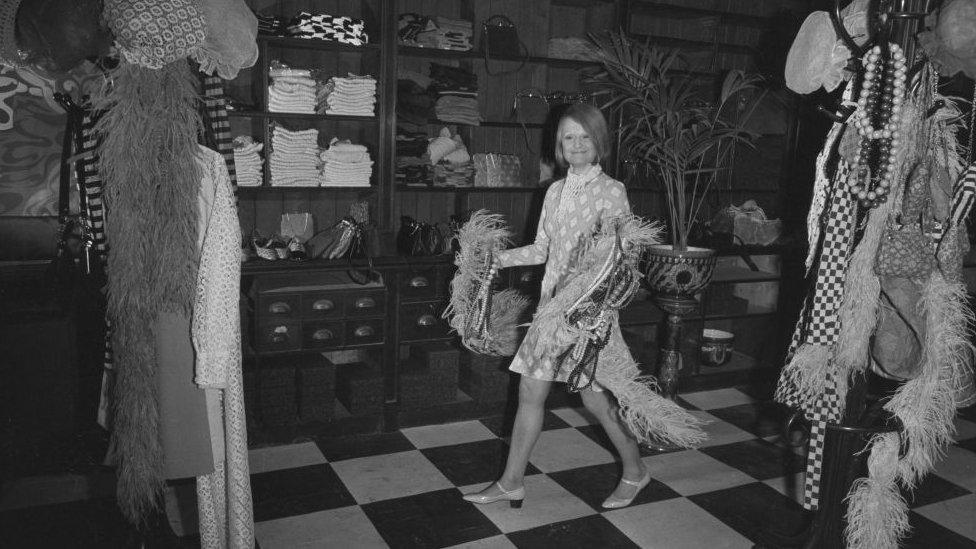
Barbara Hulanicki said she created the brand after realising there was "nowhere for you to go shopping" as a young woman
Ms Hulanicki said: "I used to be like oh God the clothes are so awful, everything is for old ladies!
"You know you're suddenly making money and there's nowhere for you to go shopping."
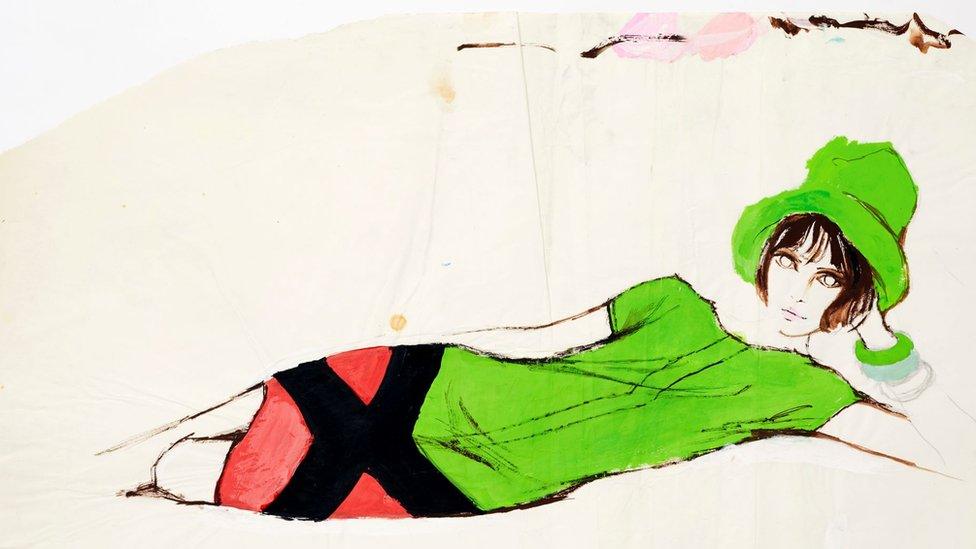
A sketch of one of Biba's designs circa 1964
Their now-famous pink gingham dress was advertised in The Mirror newspaper when it first came out, going on to sell 17,000 copies and putting Biba on the high street fashion map.
It was sold for 25 shillings, which is roughly £25 today, and was "cheap even in those days," said the exhibition's curator Martin Pel.
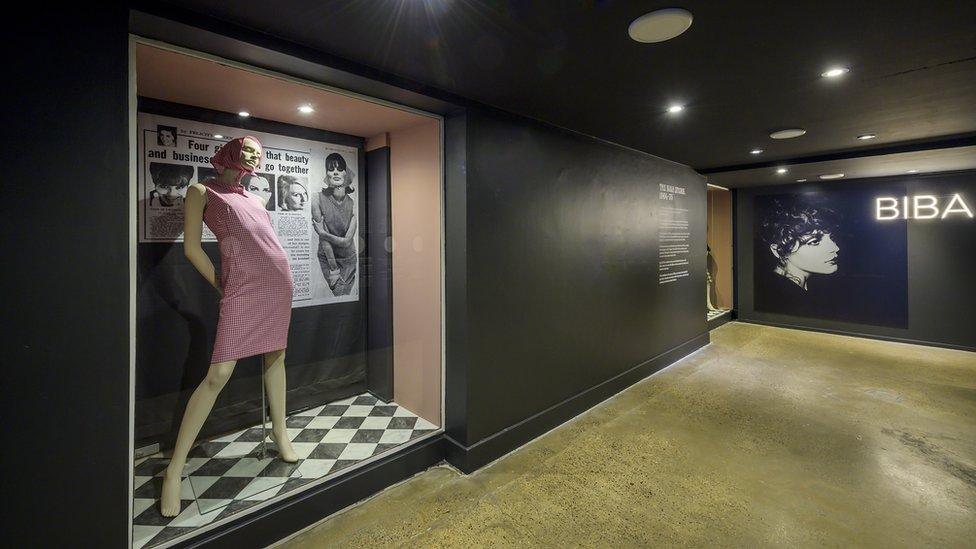
The now famous pink gingham dress put Biba on the fashion map
The dress was photographed by society photographer John French and modelled by Paulene Stone, who was "a big model back then".
"It was just very much the right dress at the right moment, that was Barbara's philosophy, to create clothes for people to wear today," he added.
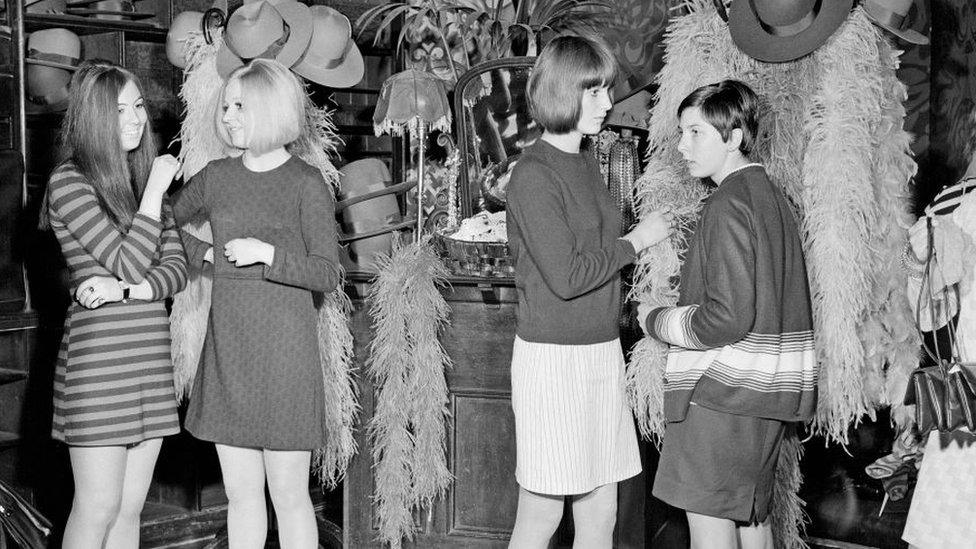
Biba is considered among similar designers like Mary Quant as bringing fashion to a wider, younger audience
By September 1964 the brand opened its first store in Kensington.
Mr Fitz-Simon worked in advertising and suggested that the price point should be kept low, so young women working in London and earning £10 per week could buy Biba clothes and still afford to pay for rent and groceries.
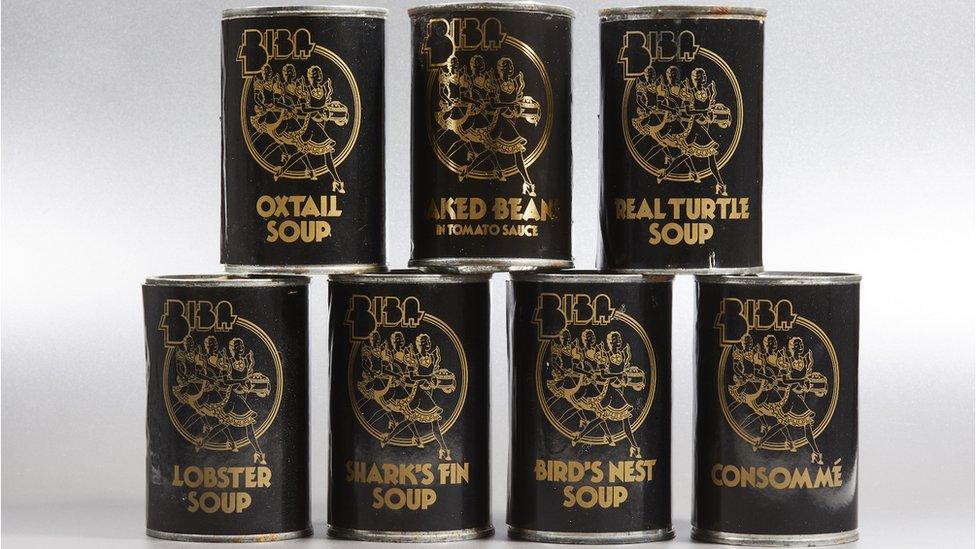
Biba soup and baked beans
Biba was one of several brands from the 1960s, including Mary Quant, regarded as bringing fashion to a younger and wider audience and changing the way people shopped for clothing.
During the 1960s the brand expanded across multiple stores and in 1973 opened its Big Biba department store on High Street Kensington, selling menswear, homeware and more - and becoming the world's first lifestyle label.
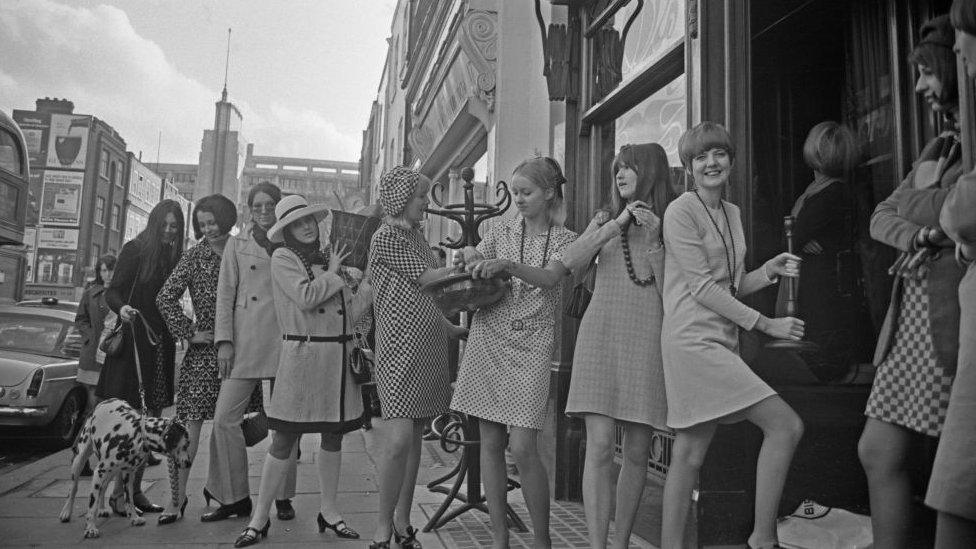
Biba surged in popularity in the 60s - here Cilla Black (right) is among those helping fit out its new store
Programme director of Fashion Studies at the University of the Arts London, Caroline Stevenson, said these labels "were creating low cost garments for teenagers, capitalising on their new income".
"Mailing out garments to young people and creating these really trendy clothes that were low cost as well, that is really the precursor to fast fashion," Ms Stevenson added.
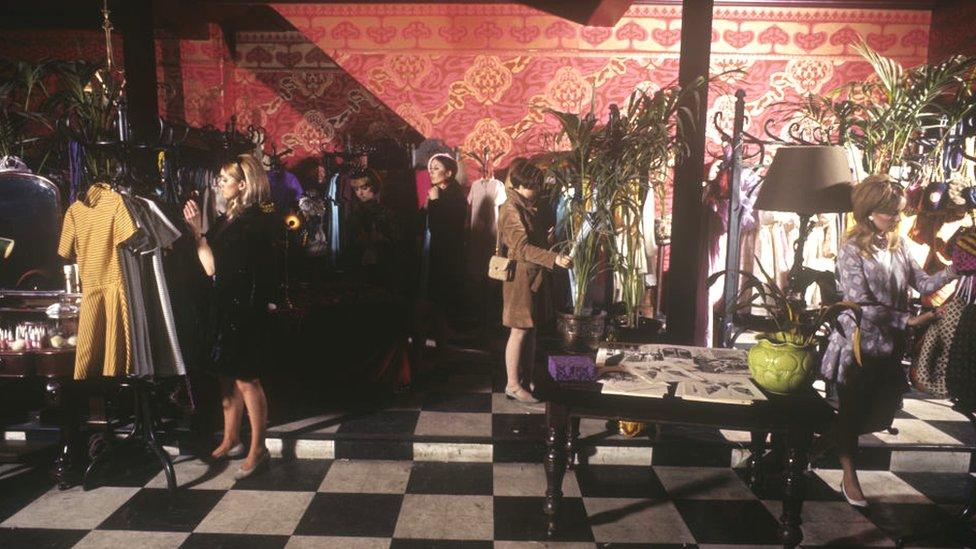
Women inspect clothes and furnishings for sale at the Big Biba department store
By 1975 the cost of running Big Biba increased and the brand closed the department store.
Since then, the brand has had several revivals under different leadership.
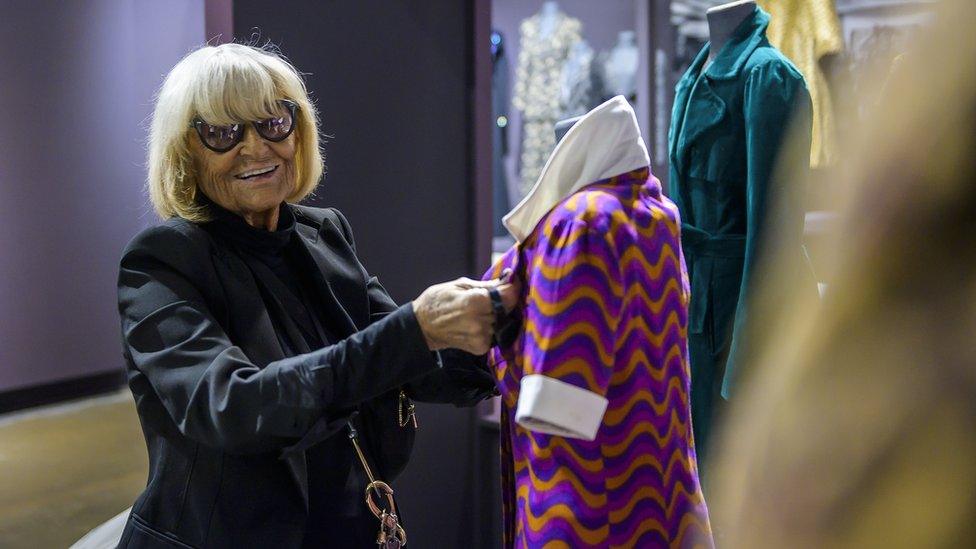
Barbara Hulanicki has been personally involved in the museum's exhibition
Now 87, Ms Hulanicki was involved in putting the exhibition together and flew from her home in Miami to London for the opening.
Alongside clothing, she handpicked original photographs, film, and other materials for the showcase.
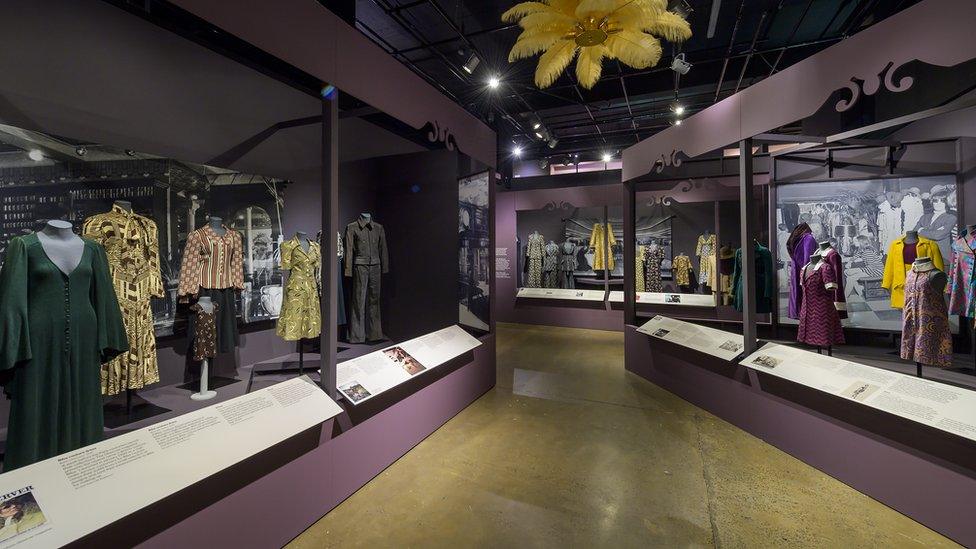
Biba's characteristic purple palette can be seen woven throughout the exhibition
The Biba Story, 1964-1975 exhibition runs until 8 September.

Listen to the best of BBC Radio London on Sounds and follow BBC London on Facebook, external, X, external and Instagram, external. Send your story ideas to hellobbclondon@bbc.co.uk, external
Related topics
- Published16 March 2024
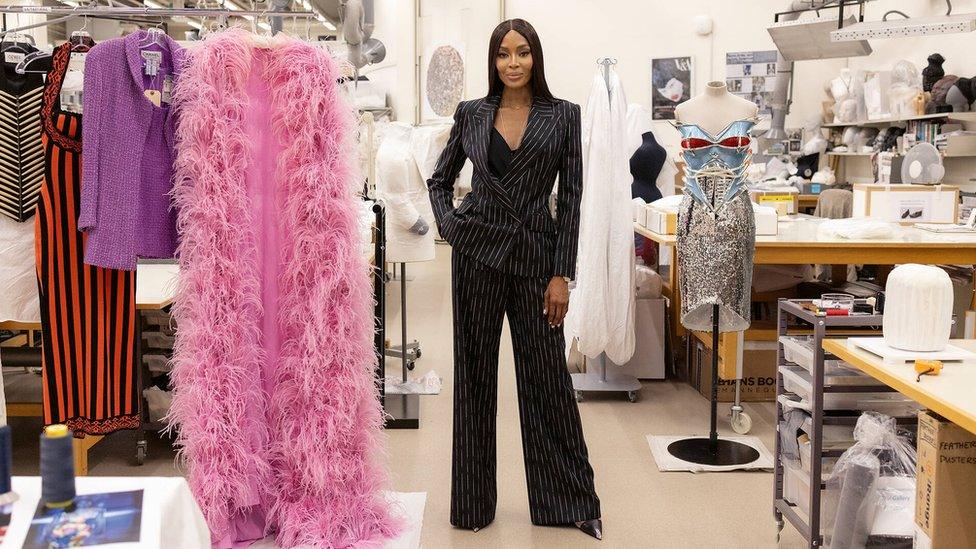
- Published1 March 2024
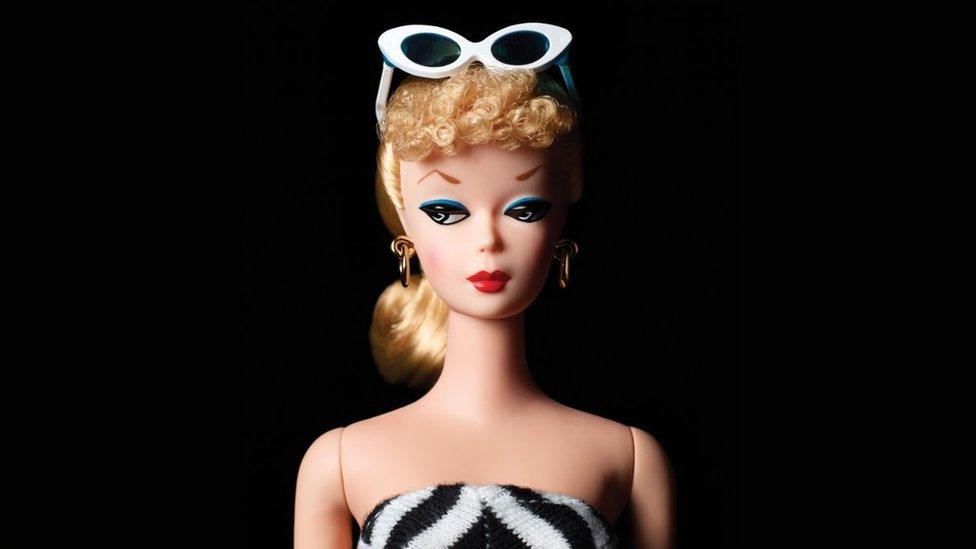
- Published26 February 2024
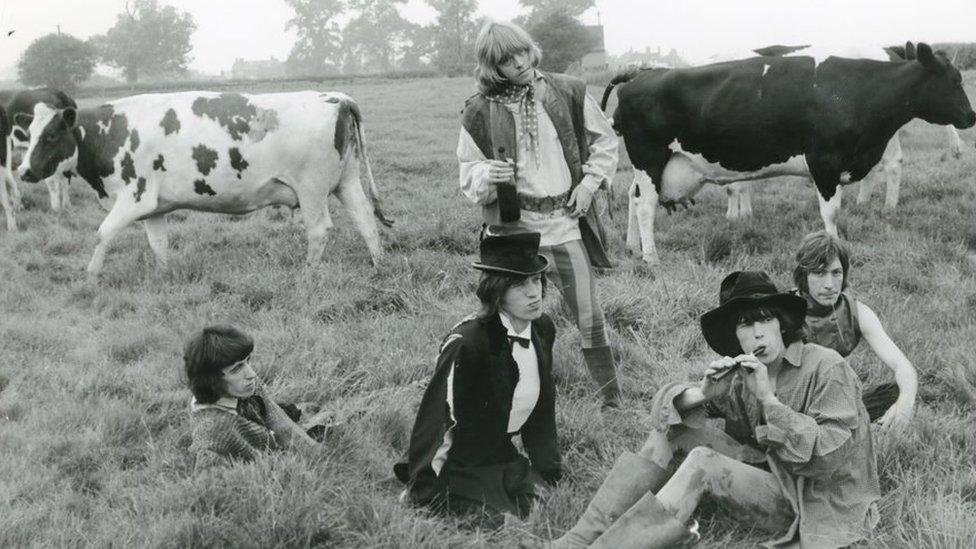
- Published13 October 2023
